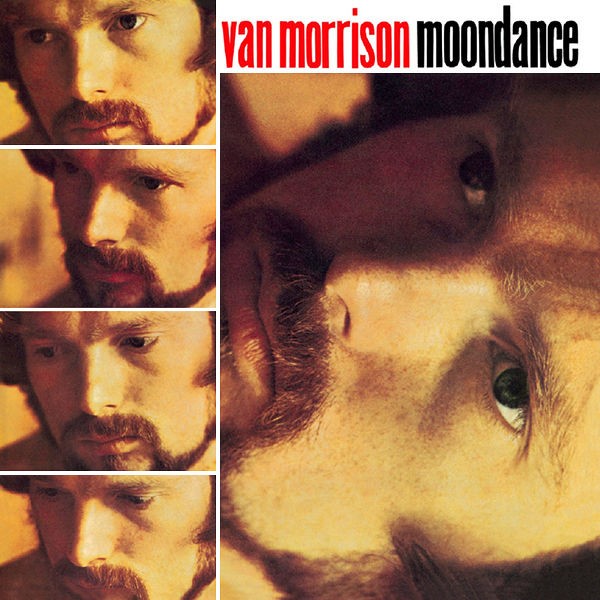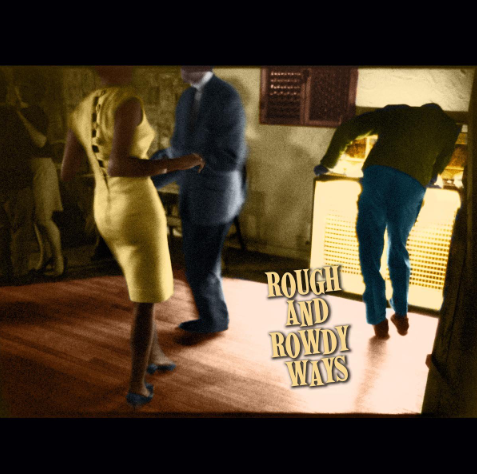Moondance

Album: Moondance
Artist: Van Morrison
Released: January 27th, 1970
Highlights: And It Stoned Me, Caravan, Into the Mystic, Brand New Day
In the case of most versatile songwriters, it takes a little while for them to show the different styles they can produce with their pen, which makes the whole process of change feel like natural artistic evolution rather than inherent eclecticism. Bob Dylan did not go from folk troubadour to electric beatnik poet in a day; Nick Cave’s transition from hellish gospel to heavenly balladry took more than half a decade; and Tom Waits spent quite a few years as the drunkard who plays sad songs for lonely souls at the local piano bar before becoming the circus leader of a haunted carnival of freaks, degenerates, and outcasts. In Van Morrison’s case, however, that versatility came more quickly, as each one of his first three works reveals a slightly distinct facet of his craft.
His awkwardly titled debut, “Blowing Your Mind!”, still carried the smell of blues and rock, especially in the long-winded highlight of “T.B. Sheets”; and these elements were undoubtedly linked to the fact Van had just left behind his Belfast band, Them. The follow-up, “Astral Weeks”, was folk rock that stretched its muscles via free-flowing jazz influences, as most of the songs crossed the five-minute threshold by engaging in organic emotional and philosophical journeys that made Van look like a man who decided to tape his search for musical catharsis or spiritual revelation. “Moondance”, meanwhile, abandons the pretensions that elevated its predecessor to the masterpiece status to show that the man from Northern Ireland could pull off radio-friendly soft rock.
Whether calculated or not, the move was understandable. “Blowing Your Mind!” had achieved success via the single “Brown Eyed Girl”, but it had hardly left a mark as a complete work. Meanwhile, “Astral Weeks”, as mighty and revered as it may be, looked like commercial suicide by an artist that was far from being established, since the meandering character of its tunes – be them long or brief – meant they were about the trip instead of the destination; as such, they did not produce any hook that was significant or immediate enough to make the album catch the ears of the general public. In that sense, it is easy to look at “Moondance” as some sort of compromise; a time when Van gave in to external forces because he felt this was a pivotal moment in his career: either he could commercially deliver in his promise as an artist or he would likely not get any other opportunities.
Yet, it is not all that simple. In a sense, “Moondance” could be compared to what Joni Mitchell would pull off four years later in “Court and Spark”. After all, both albums display very artistic and idiosyncratic songwriters that had previously challenged musical conventions presenting a work that, superficially, could feel excessively conformist. As usual, though, the devil is in the details, and like it would happen in “Court and Spark”, the greatness of “Moondance” is evident to anyone listening to it, but the elements that make it stand out in the midst of a flood of radio-friendly soft rock released during the 1970s – which is a fad that it partially helped create – are so sneaky that some who come into contact with the record might not even notice it to the point they are able to articulate it in words.
For starters, however, it is important to address the obvious: “Moondance” is beloved because it is an astonishing collection of great songs. If it were not so quaint, it could be one of those classic albums in rock history that could deceive listeners into thinking they bought a collection of greatest hits. Through the record’s thirty-eight minutes and ten tracks, Van Morrison simply does not miss, delivering a sequence of great choruses, an abundance of marvelous hooks, and a trove of emotionally meaningful moments that are catapulted to the sky thanks to beautiful arrangements as well as great performances by both Van and his band. The album’s soft nature means it never engages listeners too directly, but pretty much all of its tracks quietly envelop one’s brain until they begin to unconsciously sing along to the endless amount of verses that seem to have been built for that very purpose.
But the ultimate secret of “Moondance” is that, in a way, it does not completely abandon the spirit of “Astral Weeks”. In lyrics, Van once again emerges as a man who likes to write about moments of delight; those little simple events, often missed by most, that are capable of elevating the human soul to some sort of higher ground. And again, he finds these gateways to transcendence in nature (“And It Stoned Me”), music (“Caravan”), and love (“Into the Mystic”). He seems to be out in a search for borderline miraculous occurrences, and the songs lyrically and musically somehow capture this particular state of mind. Unlike it happened in “Astral Weeks”, Van will not take listeners on a seven-minute emotional journey about the beautiful girl he used to see walking down Cyprus Avenue as a teen. Instead, “Moondance” feels like an abbreviated version of that quest, either because it has learned a shorter path to delight or because it opted to focus on the transcendence that follows the long meditation.
What matters is that this approach brings a great degree of spontaneity to these concise tracks, and its success in “Moondance” makes it unsurprising this unchained impulse would become a concept that is intimately tied to Morrison as an artist. This freedom is everywhere here, albeit in a more restrained mode than in “Astral Weeks”. In the title song, where the record embraces jazz, there is a prevalent feeling of improvisation, especially in the walking bass line and in the woodwinds. In “Caravan”, the start-and-stop chorus seems to show Van testing his band, because the hook that signals the movement is used irregularly through the track to great effect. The transition between verse and chorus in “Into the Mystic” is so seamless it comes off like an organic transformation done on the spot. “Come Running” is the kind of joyful free-flowing southern shuffle that could have been executed by The Allman Brothers Band. “These Dreams of You” is loose and very well-played acoustic blues. “Brand New Day” has Van trading lines with his female backing singers in its cathartic chorus. “Everyone” has a hook so simple it appears to be ad-libbed. And the lalalalas of “Glad Tidings”, which also show up in “Caravan”, have got to be a spontaneous product of sheer happiness.
Immersed in this feel-good environment, “Moondance” absolutely grooves, because – as it has often been the case in his career – Van Morrison anchors his folk softness in the rhythm of the black music he admired, especially R&B, jazz, and soul. Therefore, both the album’s light and more energetic moments gain very tasteful power. Horns bring an extra dose of spiritual elevation to the chorus of the acoustic ballad “It Stoned Me”, the soul backing singers add beauty to the fragile whispered infatuation of “Crazy Love” as well as to the nigh gospel revelation of “Brand New Day”, and the thick rhythm section causes the title track, “Come Running”, and “These Dreams of You” to swing. Surrounded by these sounds, captured by its infinite hooks, and stunned by its marvelous songwriting, “Moondance” becomes impossible to resist. And perhaps that was Van Morrison’s plan all along, because by condensing the soul-searching without abandoning his identity, the invitation of “Astral Weeks” turns almost into an intimation for us to see life through his eyes. Consequently, “Moondance” is nothing short of revelatory.
![]()

